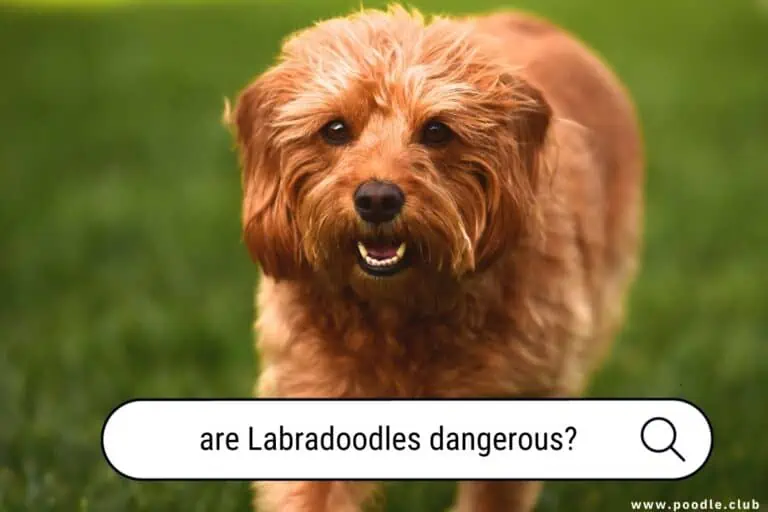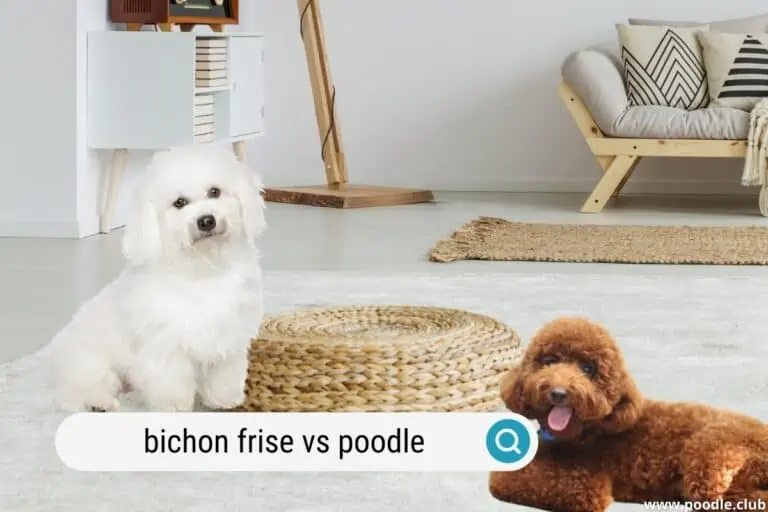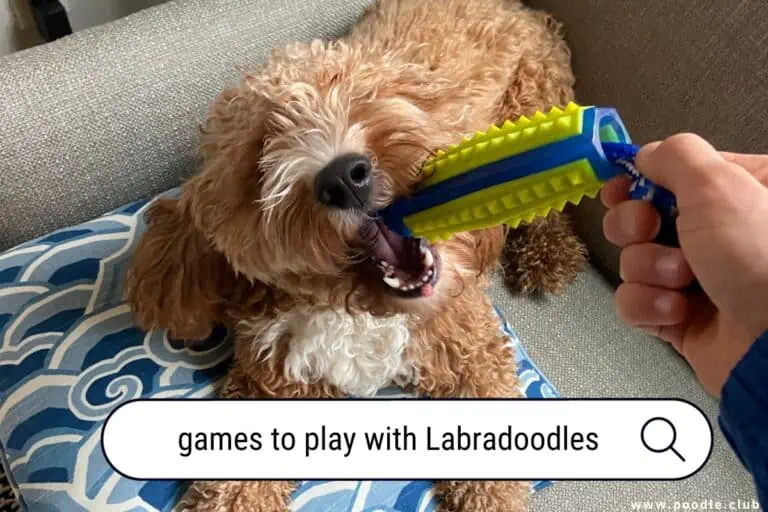When Do Yorkies Change Color (Puppy Coat Transition Guide)
When you think of a Yorkshire terrier, you likely think of the classic tan and blue coat. However, as puppies, Yorkies have black and tan or gold coats for a while after they’re born before it changes. Though they are relatively the same, there are a couple of coat variations for both puppy and adult Yorkies.
So, when do Yorkies change color? Let’s find out!

Yorkie Coat Stages: When Do Yorkies Change Color?
Yorkies have dark coats when they’re in their puppy stage compared to their adult stage. Some puppies’ fur is so dark it may appear to be black. You may notice a few silver hairs on a Yorkshire Terriers’ head at about 9-10 weeks old, signifying their coat changing color.
So, unless you breed Yorkshire Terriers, there will be a color shift before adoption. Then, around 16-20 weeks, Yorkies will lose their puppy fur, also known as felting. You’ll also notice more significant color changes, with the silver hairs progressing to their back.
At six months old, the coloring will be noticeable throughout their bodies. However, the transition will continue until your Yorkie is up to two years of age when it’s fully developed.
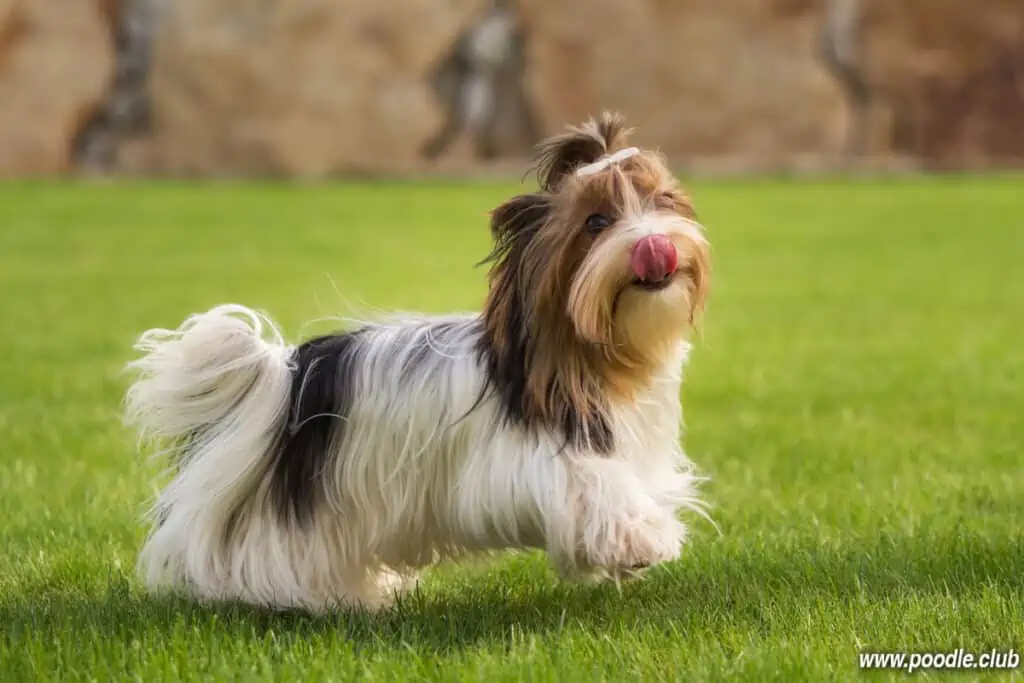
Why Do Yorkies Change Colors?
The reason Yorkie’s coats change color comes down to their genetics. A dog’s cells contain 39 pairs of chromosomes, one from the mom and the other from the dad. Every chromosome contains thousands of genes, which hold the information that makes your dog unique, i.e., temperament, sex, color, size, and more.
If your Yorkie gets a dominant gene from one parent and a recessive gene from the other, the dominant gene will appear in your pup. When both genes are recessive or dominant, it’s hard to know what to expect. This is why every Yorkshire Terrier will look and behave slightly differently.
PuppySpot is a reputable dog marketplace where you can browse and find compatible puppies right from the comfort of your home. They have placed over 200,000 puppies into homes in the US!
Regarding the color change, two primary pigments determine a dog’s colors: eumelanin, or black, and phaeomelanin, or red. These pigments mix in various ways, offering several colors and shades your pup may manifest.
When Yorkies are puppies, the eumelanin is dominant. As the puppy matures, its genetics cause some of this shade to lighten into silver or blue. Then, in other areas, the eumelanin may completely fade, and the body produces phaeomelanin.
The Yorkshire Terrier parents’ genes will determine the darkness or lightness of the puppy’s coat and where the colors will appear. Despite some differences, all purebred Yorkies will fall into a set list of coat color combinations.
Yorkie Puppy Color Combinations
Because of genetics, Yorkies have unique coat types that may vary, but the colors will change as the puppy grows.
Black and Tan
Standard, purebred Yorkies have black and tan coats at birth, though the tan portion may appear to be closer to a brown shade. The color proportions vary, though typically, a Yorkie puppy has a black coat with tan on its ear tips, around its mouth, above its eyes, and chest.
Some puppies will have tan on their tail or feet as well.
Black and Gold
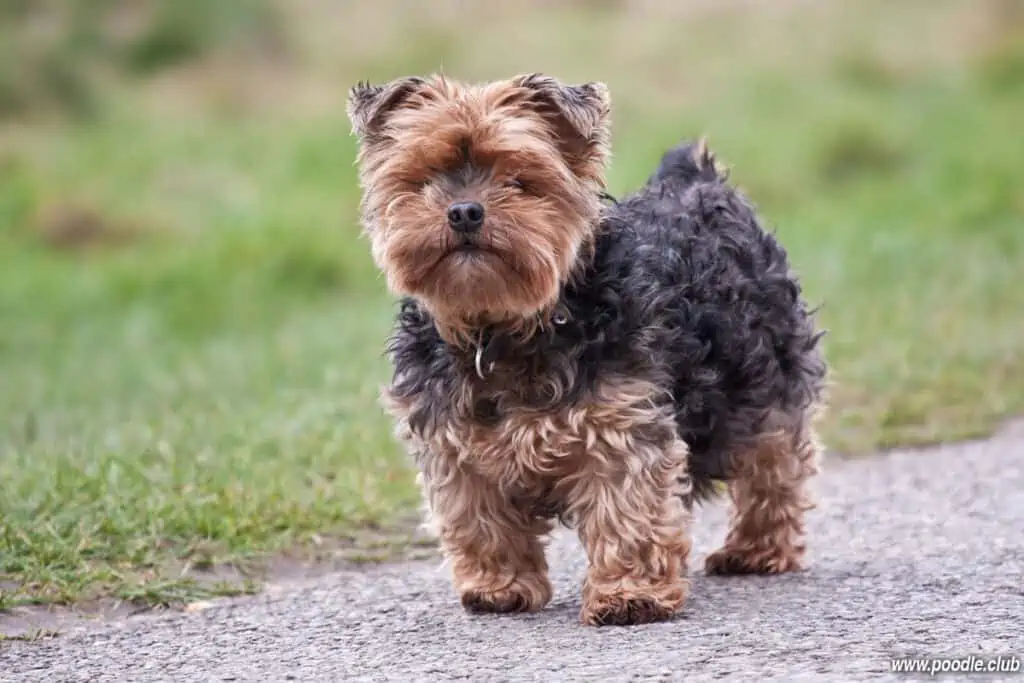
Yorkies may have a black and gold combination as a puppy. This is especially common when the lighter phaeomelanin progresses more quickly than the dark eumelanin. The balance between the black and gold on your pup may vary.
Adult Yorkie Color Combinations
Once your Yorkie reaches adulthood, its coat will likely look vastly different than the puppy coat it was born with. The changes appear gradually, but you’ll see more differences when they’re around six months old.

Blue and Gold Yorkie
Most Yorkies will have blue and gold coats once they reach maturity. Without direct light, it may be challenging to see the initial change. However, by the time it’s two years old, there should be a notable difference.
On the other hand, the tan shades will fade and lighten. The roots may have a darker bronze color while the light gold sits at the ends. However, this varies depending on the style length you keep your Yorkie’s hair.
By two years old, your Yorkie will often have a grayish-blue back with a golden chest and head.
Blue and Tan Yorkie
Like blue and gold Yorkies, the adult Yorkie can be blue and tan. In this case, the phaeomelanin in its genes will produce a darker shade. Although the exact color is subjective, the American Kennel Club (AKC) recognizes blue and tan Yorkies in its Yorkshire Terrier registry.
Rare Yorkie Color Combinations
Sometimes, Yorkies may be a color combination that’s unlike the four listed above. In some cases, the variations result from breeders mating two Yorkshire Terriers with recessive genes, while others occur from crossbreeding.
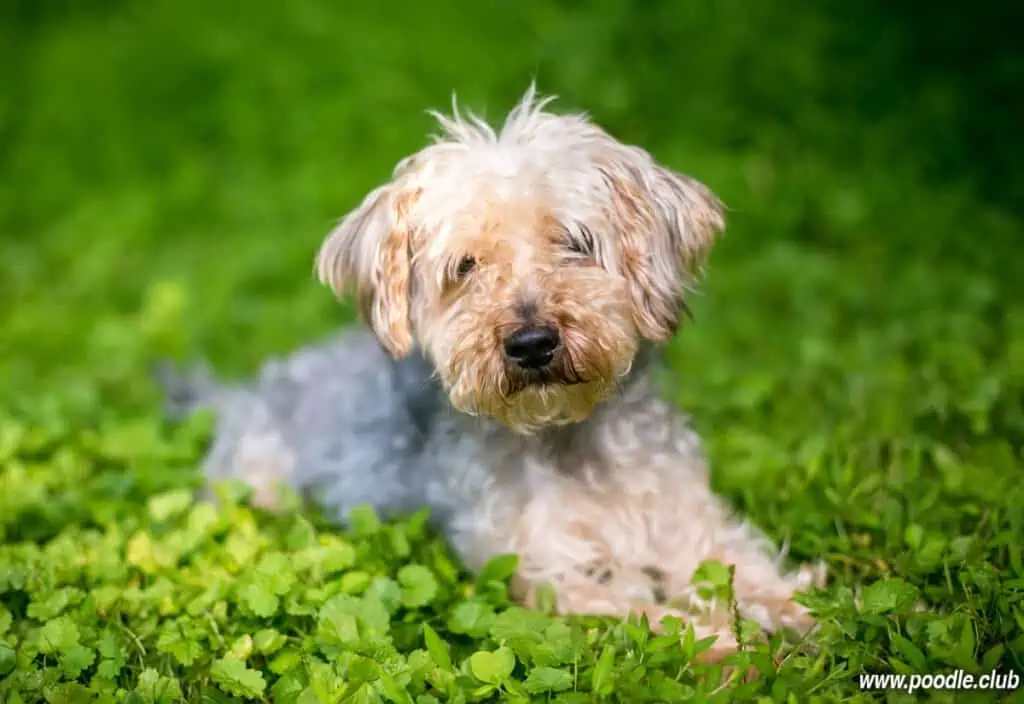
Parti Yorkies
Parti Yorkies are tri-colored with blue, white, and tan, though you may also come across chocolate or blonde Partie Yorkies.
This uniquely-colored pup occurs from breeding two Yorkie parents with the recessive S-Locus gene, which causes the dog to have white hair.
Some people see Parti Yorkies as purebreds, while others believe that at some point in the Yorkshire Terrier’s lineage, they were mixed with another breed, like a Maltese, resulting in white Yorkie colorings.
Either way, the AKC recognizes Parti Yorkies as members of the breed, though they cannot qualify in dog shows due to the nonstandard coat.
Chocolate or Brown Yorkies
Chocolate Yorkies result from crossbreeding a Parti Yorkie with another Party or standard Yorkie, with both parents containing the recessive B-Locus gene. This gene lightens the eumelanin, giving their coat a chocolate hue versus silvery blue.
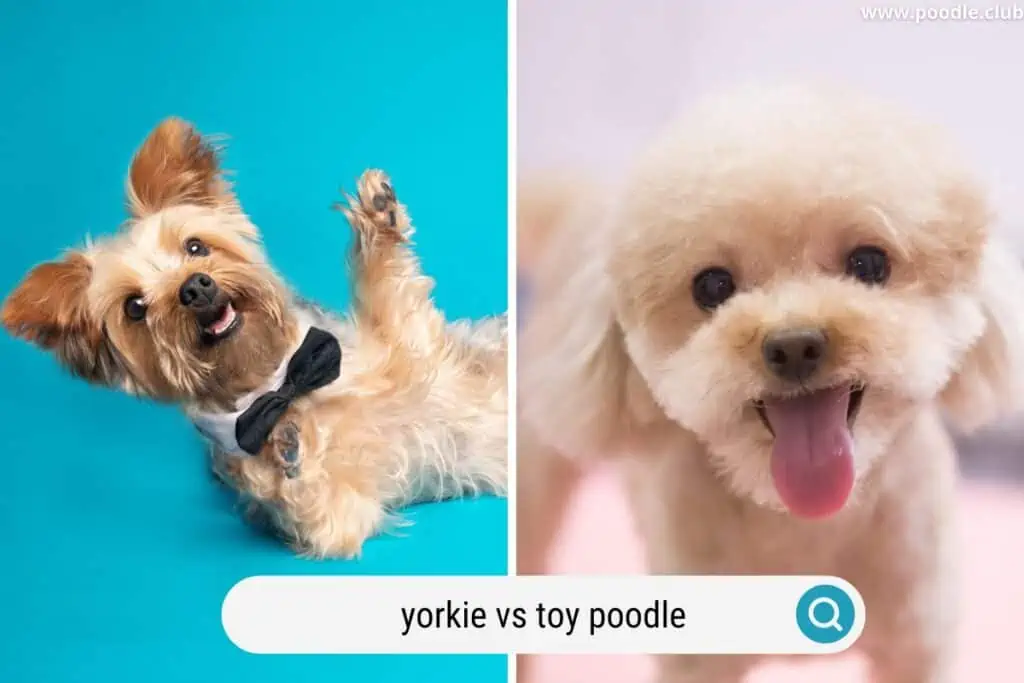
Golden Yorkies
Golden Yorkies have golden fur all over due to the predominance of the phaeomelanin gene. It’s unclear whether it’s genetically possible for a purebred. However, a purebred Yorkie may mature to have more tan or golden hair than blue.
Red Yorkies
Red Yorkies have reddish-bronze fur coming from the prominence of the phaeomelanin gene. The more melanin in the coloring causes the hair to be darker, resulting in this distinctive pup. A red Yorkie will likely have blue fur but with bronze hair on the chest, belly, chin, and legs.
Frequently Asked Questions
Here are the most frequently asked questions regarding when Yorkies change color.
What color are purebred Yorkies?
Black, blue, tan, and gold are the official colors of the Yorkshire Terrier. However, there are other variations, and their coats change colors as they mature.
Can purebred Yorkies have white on them?
Purebred Yorkie puppies may have white spots, typically in the chest area, though sometimes the white appears below the mouth or on its feet. The white markings will fade as the Yorkie develops its adult coat color.
What is the rarest Yorkie color?
Parti Yorkies are the rarest combination with blue, white, and tan fur. The mixture is rare due to the recessive genes required to produce this unique combination.

How can you tell if you have a purebred Yorkie?
Purebred Yorkies will have silky, fine fur and a straight and moderately long coat. As puppies, they will have a black and tan or gold coat, and adults will have a blue and tan or gold coat.
Do Yorkies shed their puppy coats?
Because Yorkie’s coats change color as they age, there is a common misconception that Yorkies also shed their coats. However, this change does not affect its standard shedding rate, and the color change takes up to two years to occur fully.
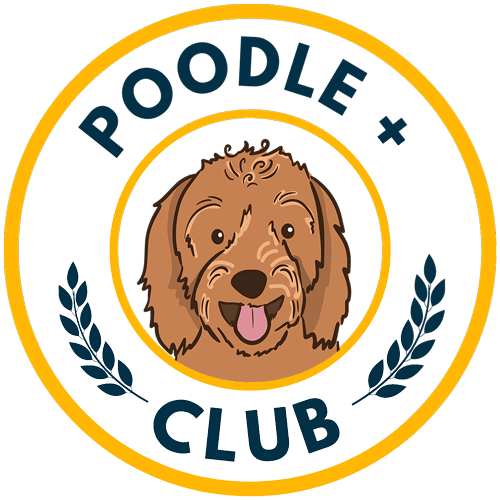

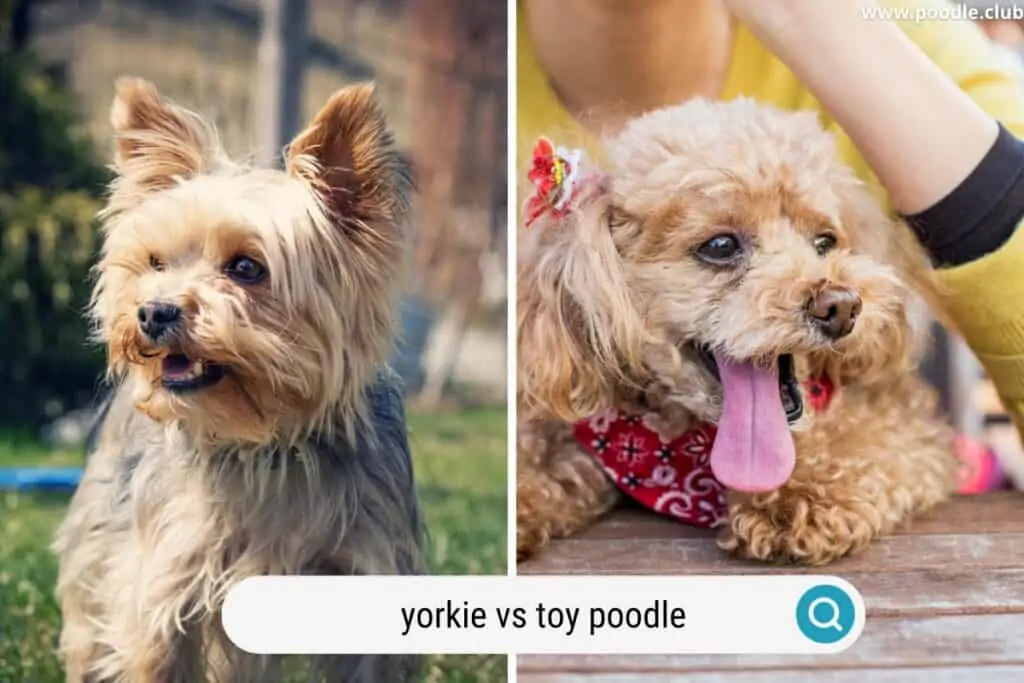

![Why Do Poodles Have Curly Hair [Explained]](https://poodle.club/wp-content/uploads/2023/05/why-do-poodles-have-curly-hair-768x512.webp)

